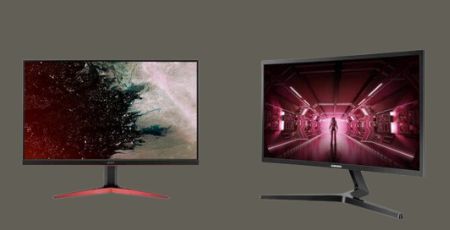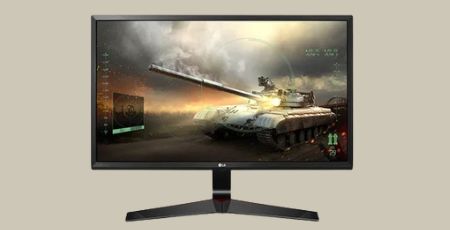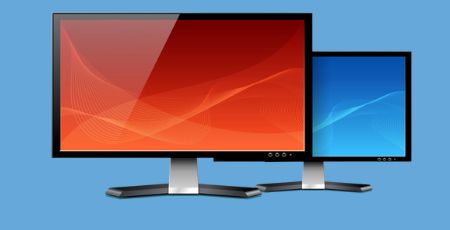Have you ever wondered about the most common differences between OLED, LCD, and Plasma monitors? If so, it’s critical to spend some time considering the main differences between the different types of monitors.
Luckily, our experts are on hand today to help you find out more about the main differences between OLED, LCD, and Plasma screen monitors, and how this might influence your decision.
Table of Contents
What are the Differences: OLED vs LCD vs Plasma
With so many different models of monitor currently available on the market, there’s often a lot to consider when looking for the most suitable type of monitor for your needs.
Just one such factor you will need to consider is the differences between OLED vs LCD vs Plasma monitors.
But what are the pros and cons of these different monitor models, and how do they actually differ?
Well, OLED monitors are often the “all singing” versions at the moment, owing to the fact that they are the newest technology on the market.
OLED monitors offer the unique feature whereby each individual pixel can be illuminated on the monitor screen, giving a far sharper finish and a far more impressive contrast overall.
Contrastingly, LCD and Plasma monitors are a little different. LCD monitors use LED lights and a backlighting system to illuminate the monitor screen, allowing the viewer to see the content on their monitor.
However, this of course doesn’t offer quite the same level of sharpness and contrast as OLED monitors, but nevertheless remains a common staple of modern television screens.
Finally, we’ve got Plasma screens. Plasma screen monitors offer an exceptionally high-quality picture – almost comparably so, even.
The biggest difference with Plasma screen monitors is literally that their screens contain Plasma, which delivers an uncompromising quality image with true black coloring – making the final image almost perfect to what you’d see in real life.
It’s exceptionally crisp and delivers stunningly high-quality images directly to the comfort of your own home – but, of course, it’s well worth noting that this doesn’t come without an incredibly high expense.
Not Every Screen Impacts Your Health Equally
We’ve outlined some of the main features of the different screen types thus far – but there’s another factor here that we should consider.
Irrelevant of the type of device you are using, opting for an OLED monitor can actually have benefits for your eye health, too.
Research has concluded that OLED monitors may be as much as 70% less harmful to your eyes and the retinas than traditional monitor and screen types, which is worth considering if you spend a lot of time at your monitor.
This is likely due to the higher levels of contrast within OLED screens, coupled with the per-pixel LEDs, creating a more natural image.
However, some people – especially those who are prone to headaches – report that the tendency of OLED screens to flicker occasionally seems to contribute to a greater number of migraines and headaches after prolonged use.
As such, this is worthwhile to consider before you make a purchase since long-term OLED monitor use could substantially change the user experience.
Here- Best Anti Glare Screen Protector For Computer Monitor.
OLED vs LCD vs Plasma: Which Type of Monitor Is Right For Me?
At this point, you’re most likely wondering: which type of monitor is best suited for your unique requirements? This often is not overly clear at first glance, which is why we’ve outlined the most valuable opportunities for each of the different monitor varieties.
Best Monitor on a Budget: LCD Monitors
If you’re looking for a high-quality monitor but don’t have thousands and thousands to spend, opting for an LCD monitor is likely to be the best bet for your needs.
Modern LCD screens, thanks to their use of LED lights, can offer a good picture quality, and while no one would mistake it for “real life” per se, a well-made LCD monitor will still deliver a very impressive picture quality that’s more than suitable for most people.

However, it’s well worth noting that even the best LCD monitors still cannot compare with either OLED or Plasma Screen monitors in terms of image quality.
It is definitely worth considering that LCD monitors are among the best for a bright final finish across the entire screen.
This is since OLED monitors only illuminate each individual pixel – and while this can give a very clear image, it may make the image a lot darker.
Finally, we should also point out here that a key selling point of LCD monitors is their long-term affordability as well.
LCD monitors can typically last for longer than other models of monitors, owing to their somewhat less high-tech design, which means your investment will continue paying back over numerous years (if you so wish).
Furthermore, LCD monitor models are also more affordable to run. With energy prices rapidly spiralling, the cost of running our monitors is now more crucial to consider than ever – and this will also impact our home’s environmental sustainability.
But why should this necessarily have to be a limiting factor for your decision? Fortunately, since modern LCD monitors use LED lights, they are incredibly efficient in terms of energy consumption, further helping you stay within your budget not only when placing the order for your brand new monitor but also in the future.
Read here- Matte VS Glossy Monitor.
Best Monitor for Reducing Motion Blur: OLED Monitors
If you use your device with fast-moving images, ensuring you’ve got a monitor that’s capable of handling and reducing motion blur is essential.
In this regard, OLED displays offer substantially higher refresh rates, which helps your content look much smoother and more clear.

Furthermore, the lack of a separate LED panel in OLED models compared to LCD monitors ensures that lagging isn’t such a significant concern you’ll need to worry about while using your device.
Best Monitor for Color Quality: OLED Monitors
There’s a significant difference between image quality and color quality on many monitor models, which is largely dependent on the screen type.
This is well worth considering as part of your final decision – especially if you’re looking for a monitor capable of playing games, which often have a far higher degree of contrast than in the real world.
In this scenario, OLED monitors are a clear winner since they can control the level of lighting for each individual pixel.
This feature is true in terms of black levels on screen and the overall color contrast, making OLED monitors a clear choice if color quality and vibrancy are important for your viewing needs.
Best Monitor for Image Quality: Plasma Monitors
If you’re looking for a phenomenally high-quality image, without a doubt, Plasma monitors are the option you need.
Indeed, while Plasma monitors can be harder to come across and even more expensive to buy than OLED monitors, they more than make up for this with their exceptionally high viewing quality.

The use of plasma in the monitor screen itself contributes significantly to this, meaning that image quality is exceptionally crisp at all times, even in the fastest action scenes.
What’s more, it’s worth noting that – no matter which angle you are viewing a Plasma screen monitor from – the image quality will not suffer significantly, thanks to the exceptionally wide viewing angle that Plasma screen monitors boast.
Best Monitor Overall: OLED Monitors
OLED monitors may be the most popular choice if you’re generally looking for a monitor screen that can do it all. Several reasons behind this may help influence your final decision.
Notably, to begin with, OLED monitors are drastically clearer than LCD monitors since they can illuminate every pixel, making them incredibly clear and impressive.
What’s more, they’re often more readily available and more affordable than Plasma Screen monitors.
Indeed, while Plasma Screen monitorsare undeniably high-quality, their extreme expense has somewhat contributed to them becoming a “dying breed” in the monitor market.
While OLED monitors are more expensive than the cheaper option of an LCD monitor, if you’re looking for a monitor that’s overall high-performance, you can get a little bit of everything.
With good energy efficiency, excellent viewing quality, and phenomenal coloring, OLED monitors could be just the option you need.
They don’t offer quite the same value for money as the LCD monitor screen, and they aren’t quite as crisp as the Plasma monitor screen, but they offer a phenomenal middle-ground nonetheless that makes them highly appealing for many buyers in the market for a brand new monitor.
And as one of the newest technologies, you can also count on OLED monitors remaining mainstream as a top-quality monitor design for years to come.
Read here- Direct LED or Edge LED Which is better and differences.
Final Thoughts
If you’ve been looking to find out more about OLED, LCD, and Plasma monitor devices, we hope today’s guide may have given you a little food for thought.
Indeed, while this decision can often seem very technical and unclear, it’s not all that difficult when you spend a little time considering the main differences between OLED, LCD, and Plasma monitors.
After all, each of these offers unique pros and cons, and these factors may help influence your decisions accordingly.

